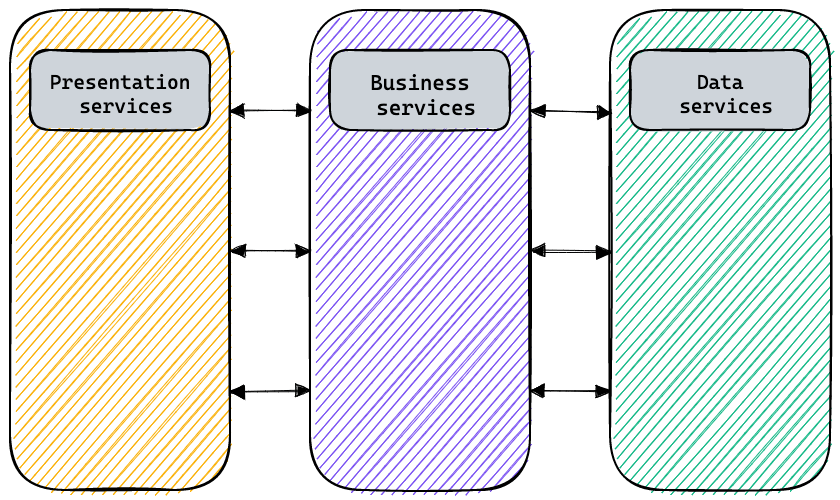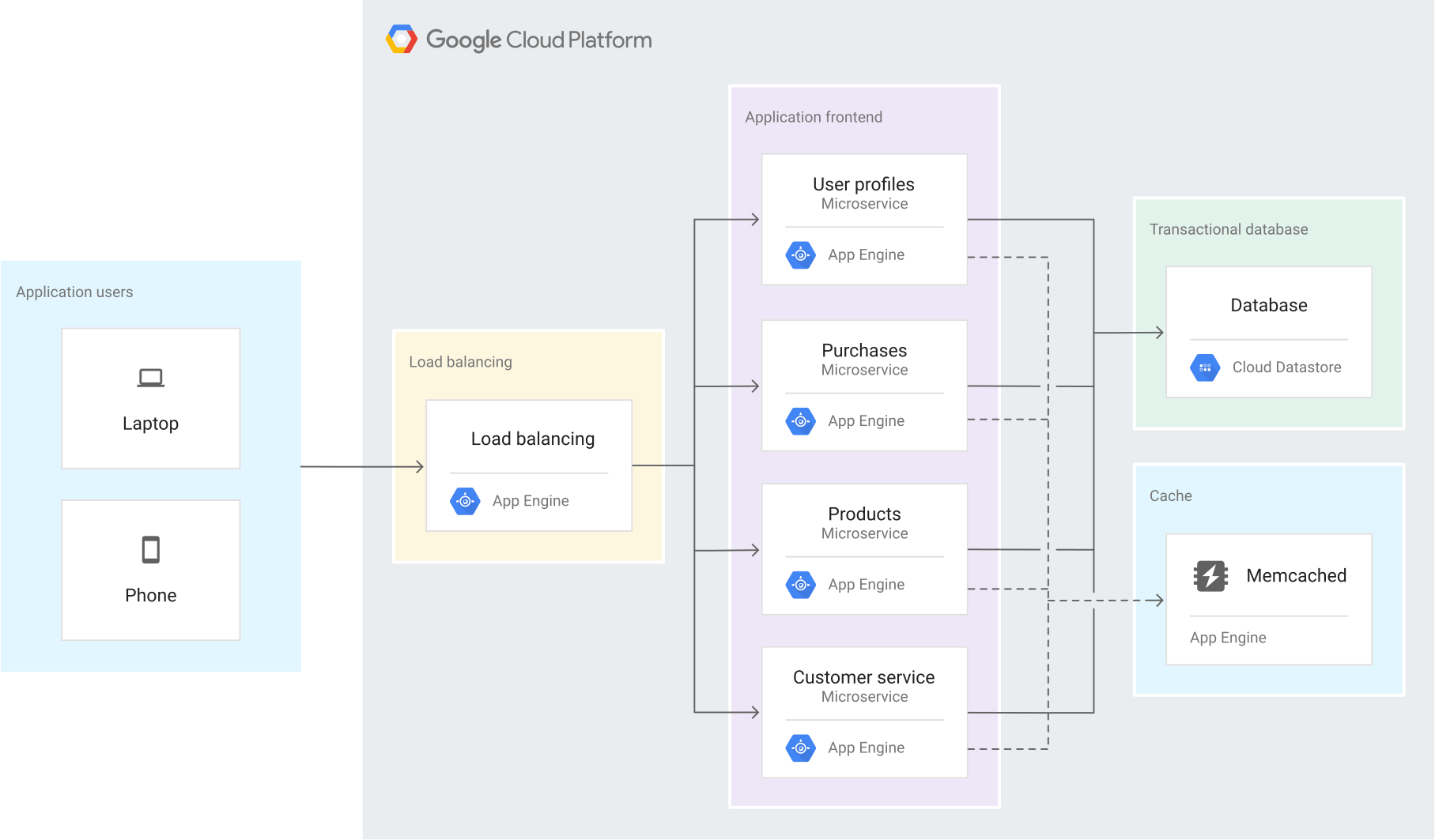Microservices are an excellent choice for high-performance applications. They allow you to distribute the load and handle increased demand without breaking or slowing down. This blog post will discuss microservices and how you can use them to create high-performance applications. We will also discuss some of the benefits and challenges of using microservices.
High-performance applications can handle a high load without breaking or slowing down. Microservices are an excellent choice for high-performance applications. If you are designing a new application or looking to improve the performance of an existing legacy or monolithic application, you might want to consider migrating to microservices.
Designing your application using microservices will allow you to break down your workload into smaller, more manageable chunks. Before further discussing microservices, we will quickly look at monolithic applications and our options when designing high-performance applications.
Monolithic Applications
A monolithic application is a software application composed of different modules combined into a single, large unit. This unit is usually a self-contained software package that performs all the required functions of the application.
Monolithic applications are popular because they are easy to develop (not all the time) and can be deployed quickly (debatable). They are also easy to test and maintain (again, debatable). However, monolithic applications have a few drawbacks.
The first drawback is that they can be challenging to scale and maintain. When the demand for the application increases, you must scale the entire application. This challenge can be expensive and time-consuming. The second drawback is that monolithic applications are difficult to update. As the application grows, adding new features or changing the codebase becomes more challenging. When a new feature is added or an existing feature is modified, the developer must redeploy the entire application. This process can cause downtime for the application and be disruptive for users, leading to performance and reliability problems over time.
The third drawback is that monolithic applications are difficult to divide into smaller units for development purposes, making it difficult for developers to simultaneously work on different parts of the codebase.
An excellent place to start is to convert a monolithic service or application into microservices. However, I would recommend taking this step slowly. You may Lift & Shift or Replatform your monolith application before Rebuilding it as microservices if yet to be moved to the cloud. The DevOps approach is to migrate from one architecture style to the next. This gradual migration approach will allow you to gradually get your feet wet with microservices while mitigating the risks of unavoidable errors.
Microservices
So, what are microservices? And how can they be used to create high-performance applications? Microservices are a software architectural style that breaks down an application into more minor, independent services. These services are self-contained with their interface and can be deployed and scaled independently.
Microservices architecture was first proposed in 2006 by Martin Fowler. At the time, there was a growing trend toward developing large, monolithic applications. Fowler suggested that small, independent services replace these monolithic applications to allow for greater flexibility and scalability.
Microservices architecture has become increasingly popular and used by many large companies, including Google, Netflix, Snap and Uber.
There are a few things that can make microservice architecture high-performant. First, microservices allow you to break down your workload into smaller, more manageable chunks to make it easier to distribute the load and prevent the application from becoming overwhelmed.
Second, microservices are usually written to be deployed independently, which means that you can deploy new services without affecting the rest of the application.
Finally, microservices are often designed for increased scalability to handle the increased load without breaking or slowing down. Scalability is a significant advantage for high-performance applications.
Design Considerations
Designing for scale means developing your application so it can grow--or shrink--to accommodate changes in demand. Designing for scale also means anticipating the future and scaling up before you need the extra capacity.
You have to make sure of the outcome of your applications when deployed to the cloud. For most businesses, the primary result for them is how they can scale their applications to meet growing demand.
One downside of microservices is that they can (if not designed correctly) become complex and challenging to manage. To avoid this, make sure you have a good plan for maintaining them because there could be moving parts and services that need to be able to communicate with each other.
A good design will anticipate growth, do not over-design; it should be flexible enough to handle unforeseen situations without costly downtime or maintenance fees.
When designing microservices, there are a few key things to keep in mind:
- Design for modularity: Break your application into small, manageable pieces that can be scaled independently.
- Design for redundancy: Make sure your system can handle the loss of any individual component without bringing the whole system down. Design for resiliency: Build mechanisms to quickly recover from failures without data loss.
- Design for simplicity: Keep your code clean and easy to understand, so it's easier to maintain and update.
- Design for transparency: Make sure you can monitor and track the performance of your system at all times.
- Design for extensibility: Allow for easy expansion to meet future needs.
Designing microservices can help make an application more scalable by splitting components into small services built around a single concern, such as storage or data access. This allows engineers to work on different system parts independently and makes new features easier to release because they only affect one service instead of every aspect of the system. Microservices can lead to a more resilient and scalable system when done correctly.
Services and APIs are essential for a microservice system. Services are the fundamental building blocks of a microservice system. You'll be able to induce complex behaviour out of a set of components that appear to be simple if you can implement well-designed microservices and APIs.
Microservice architecture
The presentation, business, and data layers are kept separate in a microservices architecture. One distinction between a monolithic application and a microservices architecture is that several different, isolated services are included instead of all the application's features in one module. The business and data layers are divided into other areas, each with its domain model and API.

The microservice architecture approach makes it possible to use different languages for different services. For example, you could use Java for the User Profile service, Node.js for the Purchases service, PHP for the Products service, and Go for the Customer service in the above microservice diagram.
This can be beneficial if you have a team of developers skilled in different languages. These services can communicate with each other through well-defined APIs.
These services (User Profile service, Purchase service, Products service, Customer service) can be managed with a container orchestration service like Google Kubernetes Engine or Cloud Run on GCP if deployed with containers. GKE can scale each service independently. If one service is getting more traffic than the others, you can scale just that one service without affecting the rest of the system. You can also update and deploy each service independently, which allows you to release new features faster.

The benefit of this approach is that it makes the application easier to develop, deploy and scale. Each service can be developed, deployed and scaled independently, making it possible to make changes to the codebase without affecting the whole application. This also makes it easier to add new features or services.
The data services layer is a group of microservices that helps you save your data. This can include caching (e.g. Memcached), document and blog storage (e.g. Cloud Storage), and databases (e.g. Cloud SQL). The data services may exist within the architecture as microservices or through managed services (such as Cloud SQL, Memorystore, Firestore etc.) that can be on-demand and provide secure endpoints that can be accessed by using an API, SDK or service accounts.
Monitoring and observability services such as logging, error reporting, debugging, and profiling can also be implemented as microservices (utilising the data services layer) or through managed services on GCP such as Cloud logging and Cloud Monitoring.
As your application grows, you can add more microservices to the architecture. You can also split up existing microservices into smaller services. This makes it possible to scale the application horizontally, by adding more instances of a service, or vertically, by increasing the resources (eg. CPU, memory) of a service.
Microservices are a great choice for high-performance applications. They allow you to distribute the load and handle increased demand without breaking or slowing down. If you are looking to improve the performance of an existing legacy or monolithic application, you might want to consider migrating to microservices. Thanks for reading! I hope this was helpful.
